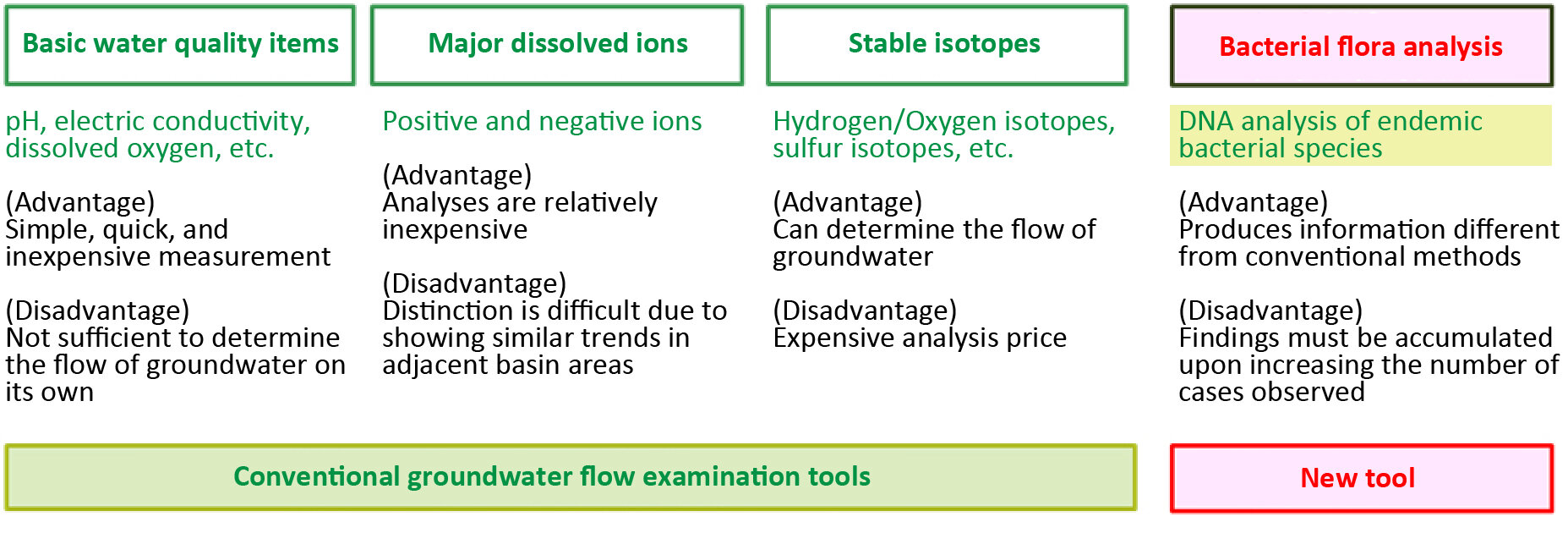2024.07.19
CTI Engineering Co., Ltd. developed a water quality classification method using DNA information of bacteria in groundwater
Technology & Research
CTI Engineering and Environmental Research & Solutions Co., Ltd., a CTI Engineering group company headquartered in Seikacho, Sorakugun, Kyoto (President: Katsue Nishiyama), jointly developed a water quality classification method using DNA information of bacteria in groundwater for classifying the flow and quality of groundwater. This technology enables assessment of the impact of construction work on groundwater with higher accuracy and consulting on groundwater pollution control measures.
1. Background
When reviewing the impact of construction work on groundwater or groundwater contamination by waste of different sorts, we must examine which direction the groundwater is flowing. Generally, this is examined by using topographical basin classification, geological structure, and water quality classification as indicators. Water quality classification typically use ion analysis, which classifies the quality of groundwater based on its characteristics, which vary depending on geological, topographical, soil and other conditions. Nevertheless, differences in water quality could not be clearly identified between groundwater found in the same geological conditions or adjacent basins, which was an issue when discussing the flow of groundwater.
2. Features of the technology
With the recent progress of DNA analytics, now it is possible to detect and classify bacteria in groundwater based on the DNA contained in groundwater (bacterial flora analysis). Our new technology uses this bacterial flora analysis to understand the source, the classification, and the path of percolation of groundwater. The technological features are as follows:
A large number of bacteria exist in the environment, and we know that the bacterial composition differs depending on the environmental conditions, including pH, oxygen, and temperature. New developments such as next-generation sequencers, which analyzes multiple genes at once, make possible an exhaustive analysis of environmental DNA found in groundwater (see Fig. 1).
The path of percolation and quality classification of groundwater can be determined by detecting bacteria and comparing the composition at different sampling points. The additional information deriving from organic matter, which was not available with conventional methods, can improve the accuracy of water quality classification (see Fig. 2).
This technology was used in the verification of the impact on three fields that are landslide control construction work, tunnel construction, and waste treatment facilities on groundwater, which demonstrated good results.

Fig. 1 Workflow of bacterial flora analysis

Fig. 2 Development of CTI Group's original water quality classification method